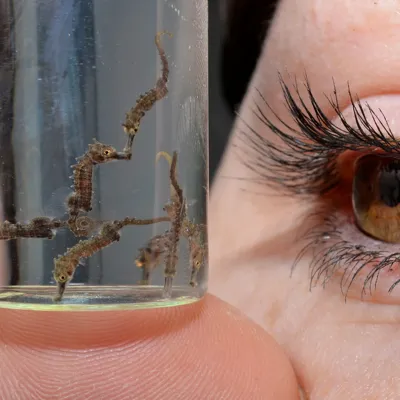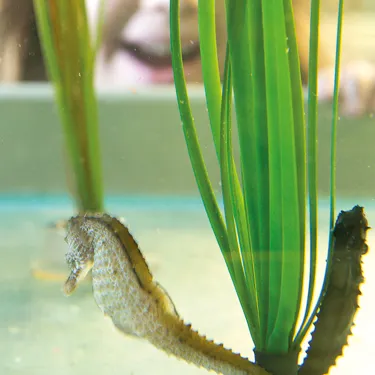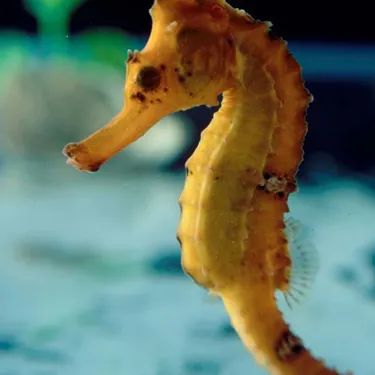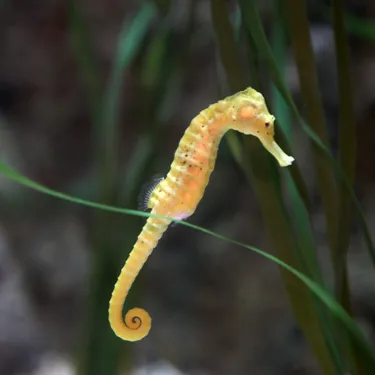- SEA LIFE, Seahorses
These curious group of creatures belong to the Syngnathidae family
Along with Seadragons and Pipefish who are members of the same family, they share some interesting traits; Their jaws are fused to form a straw-like snout, instead of scales they have thin skin stretched over a series of bony plates and they are slow swimmers.
You can discover these amazing creatures as you journey into the Seahorses zone during your visit. Scroll down to find out more!
Seahorses
Perhaps the coolest thing about this group is that the males brood their babies! A male Seahorse has a brooding pouch on its belly into which a female can place her eggs. After a few weeks when the babies are ready, the male Seahorse gives birth. He rocks back and forth like a rocking-horse whilst the tiny baby seahorses pop out from a small hole in his tummy.


Pygmy Seahorses
Are as tiny as your little fingernail, but Big-belly Seahorses will be even bigger than your hand!
Their Ancient Greek name is Hippocampus, which means ‘horse sea monster’. But we don't think our seahorses are monsters at all!
WOW Facts!

There are over 40 species!
You can find seahorses in oceans all over the world! Some live on coral reefs, others amongst mangrove roots and many live in seagrass meadows.

Did you know?
There are two species of Seahorse that can be found in the waters around the UK and Ireland?

Big Bellies
SEA LIFE Loch Lomond was the first aquarium in Scotland to successfully breed and rear Australian Big Bellied Seahorses

Seahorse tails are prehensile
Which means they can use them to grip things like a monkey's tail! Seahorses hang onto seagrass or coral so they don't get swept away in the current.